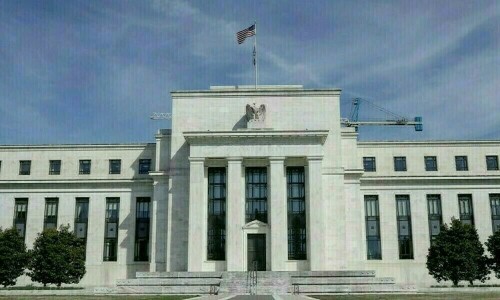US Federal Reserve Expected to Maintain Steady Rates Amid Economic Uncertainty
The US Federal Reserve is widely anticipated to maintain its current interest rate levels as it navigates the unpredictable economic environment shaped by President Donald Trump’s fluctuating tariff policies.
The Federal Open Market Committee (FOMC) commenced its second day of meetings at 9:00 am EST, as confirmed by the central bank. The committee’s decision will be disclosed later today, followed by a press briefing led by Fed Chair Jerome Powell.
Since the start of his term, the Trump administration has increased import taxes on major trade partners such as Canada, China, and Mexico, occasionally reversing these decisions, and has also floated the idea of imposing similar taxes on other nations, creating apprehension in US markets.
A number of analysts are concerned that Trump’s tariff actions, workforce reductions in the public sector, and immigration proposals could drive inflation higher and impede economic expansion. These factors complicate the Federal Reserve’s objectives of keeping inflation near its two percent target while sustaining a robust employment landscape.
It is predicted that Fed decision-makers will keep the benchmark interest rate in a target range of 4.25% to 4.50%, indicating a cautious approach until the full economic consequences of the current administration’s policies are better understood.
Eric Rosengren, former President of the Boston Fed, stated, “There won’t be any change in the interest rate, and there’s a compelling reason for that.”
He added, “It remains uncertain how high and extensive tariffs will become, and how long they will remain in effect. Consequently, accurately estimating the impact on inflation or unemployment is challenging until greater clarity is achieved.”
US Fed begins rate discussions amid heightened economic concerns.
The FOMC is also expected to release updated economic projections. A number of experts believe that trade uncertainties may cause the committee to moderately raise its inflation forecasts and lower its economic growth expectations.
White House National Economic Council Director Kevin Hassett commented in a recent interview regarding the Fed’s next steps, questioning how they will transition from tighter monetary policies to a more neutral stance.
He suggested that this shift could occur in the coming meetings.
Slowing Economy
Recent economic indicators have generally pointed to a resilient US economy. The Fed’s preferred inflation gauge indicated a 2.5% increase year-over-year in January, which is above the target but significantly reduced from the peak observed in 2022.
The economy showed strong growth through 2024, and the labor market maintained strength with consistent job creation and a historically low unemployment rate.
However, sentiment has deteriorated since Trump’s return to the White House, with rising inflation expectations and market volatility linked to the inconsistent implementation of tariffs.
Fed Chairman Jerome Powell remarked at a recent event that there is no need to rush and the Fed is well-positioned to await greater clarity regarding the implications of the administration’s economic agenda.
‘Disaster’
While Fed officials have generally avoided direct criticism of the new administration, others have been more vocal.
Michael Strain, Director of Economic Policy Studies at the American Enterprise Institute, described President Trump’s handling of economic policy as a “disaster” in a recent online commentary.
In their December economic outlook, Fed policymakers had projected two quarter-point rate cuts for the current year.
However, Barclays economists suggested in a recent analysis that the trade uncertainties may lead the Fed to reduce this to only one rate cut this year.
Nationwide chief economist Kathy Bostjancic observed that Fed officials are wary of overreacting, anticipating that the Fed’s forecasts will include two rate cuts but ultimately only implement one due to prevailing uncertainties, noting the need for clearer economic signals following the anticipated rollout of retaliatory tariffs in April.



Comments (0)
No comments yet. Be the first to comment!
Leave a Comment